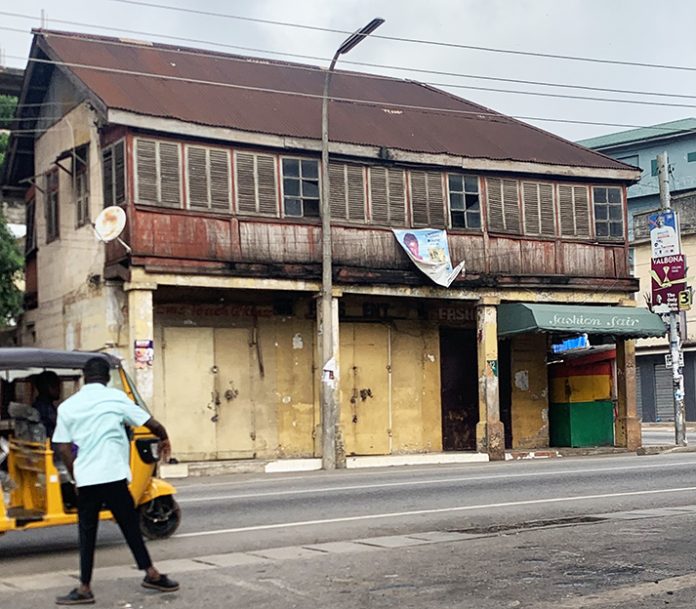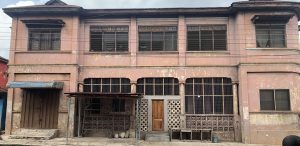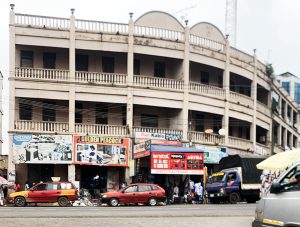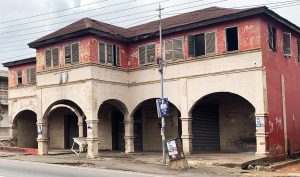
Kumasi, the historic capital of the Ashanti Kingdom and Ghana’s cultural heartbeat, is rapidly losing its architectural heritage to modern development. Once a city defined by iconic traditional buildings and colonial-era structures, Kumasi’s unique identity is fading beneath the rising tide of glass-and-steel complexes. Experts warn this trend threatens not just the city’s skyline, but its very soul.

In the bustling, traffic-choked streets of Adum, the commercial heart of Kumasi, heritage buildings are rapidly disappearing. This unsettling trend clashes with Kumasi’s reputation as Ghana’s cultural citadel and raises urgent questions about the city’s identity and future.
Kumasi is widely known for its rich culture and customs expressed through its food, clothing, language, festivals, and other traditions. However, this vibrant cultural identity is increasingly at risk as the city’s architectural heritage vanishes.
Unlike European cities such as Paris, Tokyo, and London, where historic buildings are preserved as living monuments, many of Kumasi’s century-old architectural treasures are being demolished to make way for modern glass-and-tile structures bearing little connection to Ashanti culture. Indeed, Adum is increasingly resembling a European city, and even traditional palaces seem to be succumbing to this craze for modernity.
Beyond Adum lies the home of King Agyeman Prempeh I, a prominent Ashanti monarch regarded as a symbol of Ashanti resilience and patriotism. Exiled by the British colonial government to the Seychelles Islands, his once-grand residence now lies in ruins, exposed to the elements just meters from the King Prempeh I Airport.
In view of the above, The Chronicle sought expects opinions from academics from the Kwame Nkrumah University of Science and Technology (KNUST)
Urban Development Beyond Buildings
Dr. Stephen Appiah Takyi, senior lecturer at the Department of Planning, Kwame Nkrumah University of Science and Technology (KNUST), offers a cautionary perspective on this transformation.
“Many believe development means building more stores and residential buildings. But true urban growth involves cultural identity, sustainability, aesthetics, efficiency, and ensuring social and environmental well-being,” he said.

For Dr. Takyi, preserving heritage is critical if Kumasi is to reflect the identity of its people. “If every old structure is replaced by modern ones, future generations will not know their roots,” he warns adding “That is why most civilized countries have strict development controls protecting heritage sites.”
Historically, Ghana’s progress was measured largely by economic indicators such as GDP and inflation. Dr. Takyi advocates for a broader approach that incorporates social and environmental factors.
“We once had a thriving timber industry that collapsed due to deforestation. Economic growth without social and environmental sustainability is incomplete.”
Illegal mining, though lucrative, destroys water bodies and harms public health, underscoring his point: “You can make money but sacrifice your health. To him, true development requires balancing economy, society, and environment to ensure lasting progress.
Cultural Heritage: Africa’s Untapped Economic Treasure
Ghana and Africa possess rich cultural heritage, yet this wealth remains largely untapped for development.
“Where did Komfo Anokye live? Where did the Ashanti kings live? These sites alone could generate billions in tourism revenue,” Dr. Takyi argued.
He pointed to a country like Thailand, which earns far more from cultural tourism despite having fewer heritage assets than Ghana. “This calls for policies that promote heritage architecture as part of cultural tourism marketing,” he contended.
“Preserving heritage sites protects our identity and tests real progress. Our ancestors built storey buildings with local materials over a century ago. Why can’t we build skyscrapers today with the same resources?”
He lamented that many Africans lose pride in their own history by imitating the West. “We are not primitive,” he stressed and added, “Our story is one of innovation, wisdom, and development.”
Ghana’s values crisis, where materialism dominates politics, religion, and tradition, threatens heritage preservation.

“Even the best laws fail if people believe money places them above the law. We need laws protecting heritage sites, but more importantly, a value system that respects these laws,” Dr Takyi told The Chronicle. He calls for education reforms to teach Ghanaian heritage from an early age, building pride and identity.
Architecture That Respects Climate and Culture
Dr. Takyi also critiqued the rise of glass-and-aluminium buildings in Kumasi, noting Western designs suit colder climates, not Ghana’s tropical weather.
“Our ancestors designed buildings with open spaces and verandas to enjoy fresh air. Why discard this wisdom and rely solely on air conditioning, which is costly and unsustainable?”
He cited the Kejetia Market redevelopment as a missed opportunity to blend traditional design with modern needs like natural light and ventilation.
The Architect’s Insight: Heritage and Identity
Dr. Emmanuel Banahene Owusu, architect at KNUST’s Department of Architecture, expanded on what heritage means in architectural terms.
Heritage, he explains, represents the collective values assigned to buildings or monuments as reminders of important events, personalities, or innovations recognized locally and globally.
Kumasi’s Ashanti buildings have influenced West African architecture for centuries. Made from local materials like laterite, mud, and thatch, and adorned with symbolic Adinkra motifs, these structures embody climate-responsive, sustainable design.
Dr. Banahene explained how Christianity influenced a shift from extended family homes to nuclear family units, prompting architectural adaptations such as multiple self-contained households within the same building.
“Christianity advocated for the nuclear family… this influenced the design of hybrid houses in Kumasi.”
While modern materials like aluminium composite panels and imported roofing are popular, Dr. Banahene stressed on the benefits of indigenous materials.
“Local materials suit our climate, cost less, and artisans have the skills to work with them. Traditional techniques like “wattle and daub” (atapkame) remain relevant despite maintenance challenges.
Community Spirit and Climate Responsiveness
Ashanti construction was deeply communal, often accompanied by cultural rituals. Courtyards served as multifunctional social spaces and enhanced natural ventilation. Mud and laterite walls provide excellent thermal performance, keeping interiors cool by day and warm by night — outperforming many modern concrete blocks.
Preserving Heritage: Challenges and Opportunities
Heritage buildings face threats from humidity, termites, rodents, and pollution. Traditional maintenance practices are vital, and new technologies like 3D scanning and photogrammetry offer innovative ways to document and protect these structures.
“Documentation ensures that even if a physical building is lost, its form and construction techniques survive virtually,” Dr. Banahene noted.
Conclusion: Protecting Kumasi’s Soul
The loss of Kumasi’s architectural heritage threatens Ghana’s cultural identity and historical continuity. Balancing modern development with preservation demands collective will from policymakers, traditional authorities, academics, and citizens alike to keep Kumasi a living testament to Ashanti legacy and African pride.








